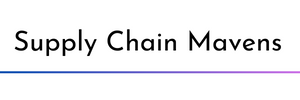“In the Year 2525, if man is still alive” -- Zager and Evans
Aldous Huxley’s dystopian novel, Brave New World, describes a world that is based on the manufacturing precepts and principles of Henry Ford – the assembly line, predictability, mass production and consumerism. Ford so shaped Huxley’s fictional society that even the dating system was revised from B.C.E. (Before Common Era) and C.E. (Common Era), to B.F. (Before Ford) and A. F. (After Ford) in his honor.
In a somewhat similar vein, our society has been shaped, influenced, and dominated by COVID-19. The pandemic has impacted every aspect of how we live; from how companies do business, how nations govern, even to how humans relate to one another. We are constantly using phrases such as “pre-Covid” or “post-Covid.” The number of articles and books that address supply chain issues in a post-Covid world today probably number in the thousands. They chronicle and help to contextualize the history, trends, changes, innovations, and predictions that impact the history and future of supply chain management. Hopefully they will be able to guide post-Covid supply chain professionals to implement the changes and make the innovations necessary for success. We will most likely be using “Pre-Covid” and “Post-Covid” to describe our environs for many years.
To meet the challenges of the post-Covid world, companies must transform supply chains by investing in, and leveraging technology that shifts focus from the factors that made supply chains lucrative in the past. While the tools used to drive profitability namely, cost reduction, efficiency, and inventory visibility were once useful, they now result in supply chains that are fragile and brittle. New concepts and technologies are required for supply chains to weather the constant stresses of disruption, relentless change, and myopic short-term thinking to make them adaptable, resilient, and agile thus reducing risk, improving effectiveness, and creating visibility across entire supply chains as they flow from suppliers to customers.
Accomplishing this will be challenging. It will require C-level executives to view supply chains as investments with a measurable return rather than simply as costs to be avoided, minimized, or eliminated. Likewise, they need to also consider supply chain professionals, indeed all employees, as partners to who are valued and who form a vital part of the enterprise. This requires taking a long-term view of their supply chains, where planning is done in terms of years, not months and quarters. This type of thinking brings humanity to the organization by putting all people responsible for the success of the organization – the stakeholders – ahead of profit maximization, which benefits only the shareholders.
Leading this effort is the job of the Chief Supply Chain Officer (CSCO). While the term has been around for a while, the CSCO has taken on a new importance in our brave new world. The organization’s supply chain is where most disruption and changes are concentrated so it becomes the CSCO’s responsibility to assume the role of change master within the organization. As the pandemic forced to maturity many technologies including, remote meeting software, digital transformation, and Artificial Intelligence (AI) systems, the CSCO and the office of the CSCO now takes on a proactive character where it is possible to integrate the processes of sourcing, purchasing, and procurement, with logistics, manufacturing, product development, warehousing, and transportation. Once far-flung siloed operations, supply chain management can now be integrated using Supply Chain Control Towers and measured using sound financial analysis.
Successful CSCO’s support investment in their supply chains by continuously training their people so that their skills stay ahead of the challenges facing them as continuous change and disruption beats at their door. Risks, in the form of internal, external, supplier, customer, natural, and manmade, make up just part of the universe of challenges for SCM professionals. Additionally, they also need to continuously test the effectiveness of their supply chains and ensure they are aligned with the organization’s culture and long-term strategy. Finally, they must continue to invest and upgrade their technology to make true end-to-end supply chain visibility a reality.
How CSCO’s and their teams manage these risks and opportunities will ultimately determine the success or failure of their organizations in this brave new world.
Gary welcomes your comments and feedback. You can email him at garys@supplychainmavens.net.

